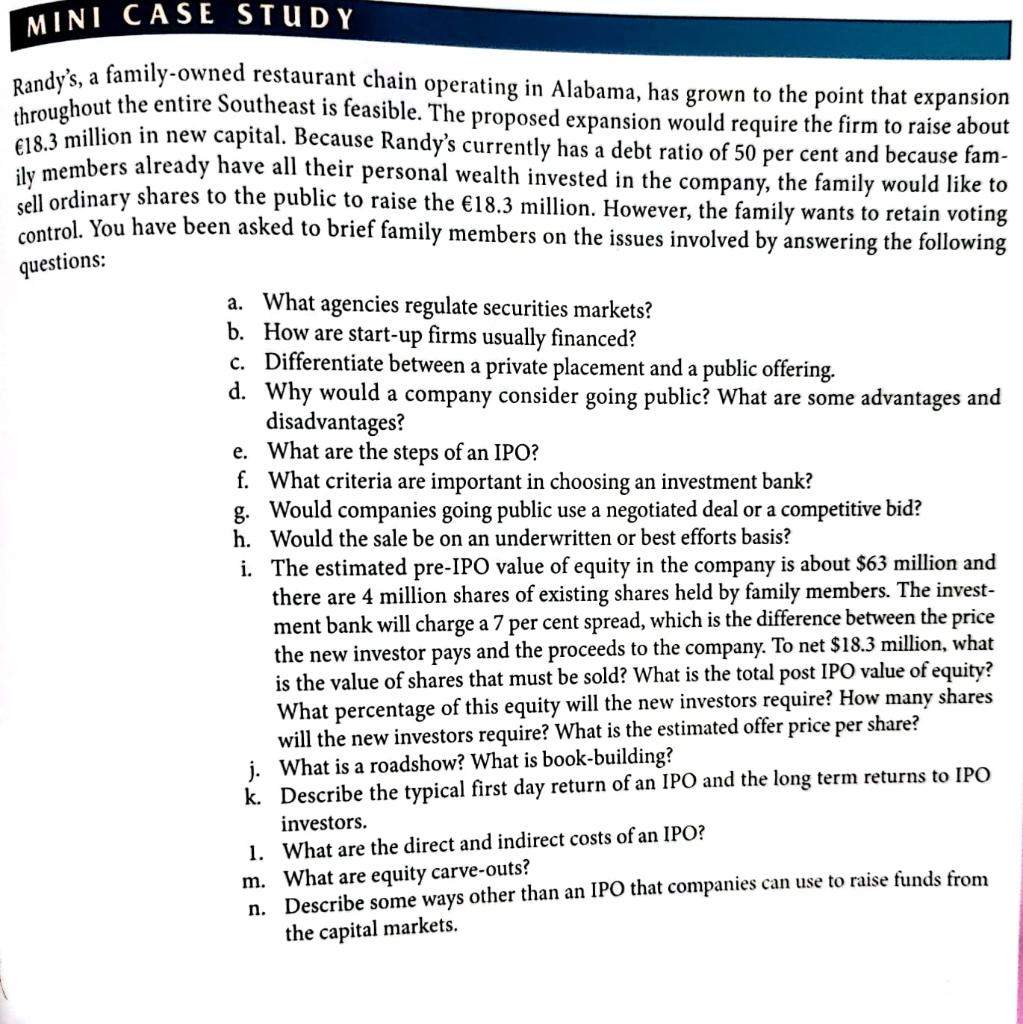
MINT CASE STUDY Randy's, a family-owned restaurant chain operating in Alabama, has grown to the point that expansion throughout the entire Southeast is feasible. The proposed expansion would require the firm to raise about 18.3 million in new capital. Because Randy's currently has a debt ratio of 50 per cent and because fam- ily members already have all their personal wealth invested in the company , the family would like to sell ordinary shares to the public to raise the 18.3 million. However, the family wants to retain voting control. You have been asked to brief family members on the issues involved by answering the following questions: a. What agencies regulate securities markets? b. How are start-up firms usually financed? c. Differentiate between a private placement and a public offering. d. Why would a company consider going public? What are some advantages and disadvantages? e. What are the steps of an IPO? f. What criteria are important in choosing an investment bank? g. Would companies going public use a negotiated deal or a competitive bid? h. Would the sale be on an underwritten or best efforts basis? i. The estimated pre-IPO value of equity in the company is about $63 million and there are 4 million shares of existing shares held by family members. The invest- ment bank will charge a 7 per cent spread, which is the difference between the price the new investor pays and the proceeds to the company. To net $18.3 million, what is the value of shares that must be sold? What is the total post IPO value of equity? What percentage of this equity will the new investors require? How many shares will the new investors require? What is the estimated offer price per share? j. What is a roadshow? What is book-building? k. Describe the typical first day return of an IPO and the long term returns to IPO investors. 1. What are the direct and indirect costs of an IPO? m. What are equity carve-outs? n. Describe some ways other than an IPO that companies can use to raise funds from the capital markets







